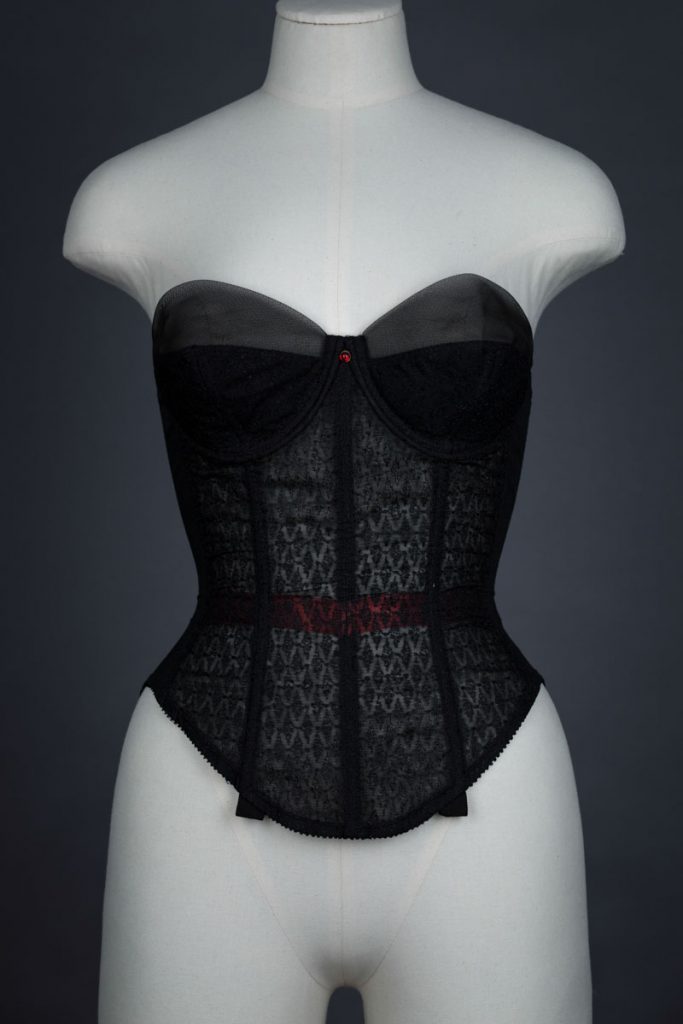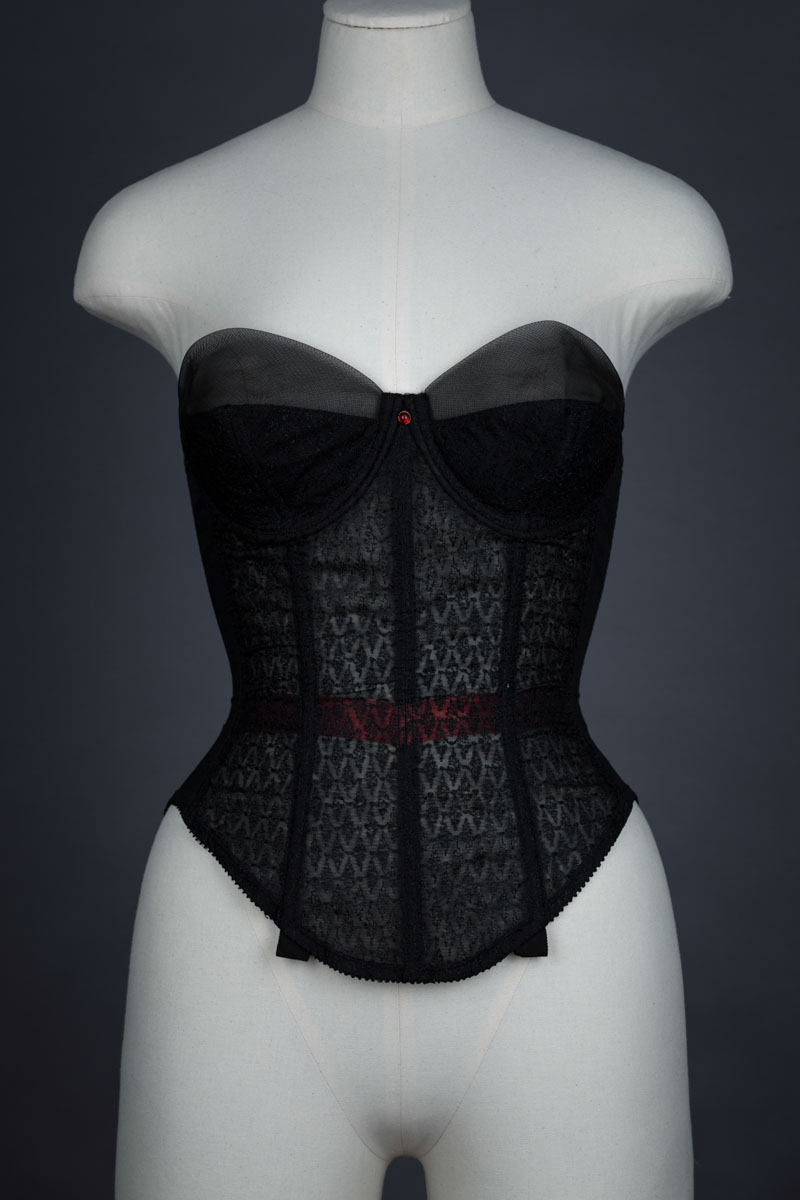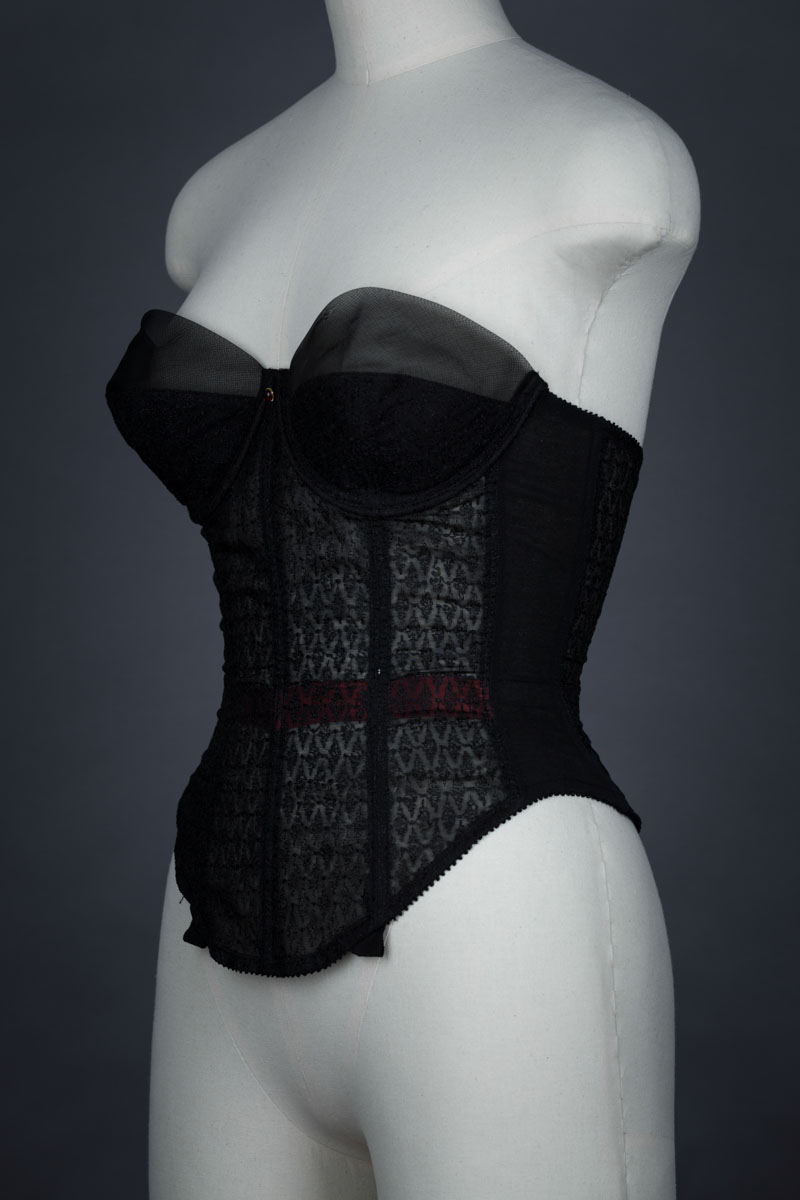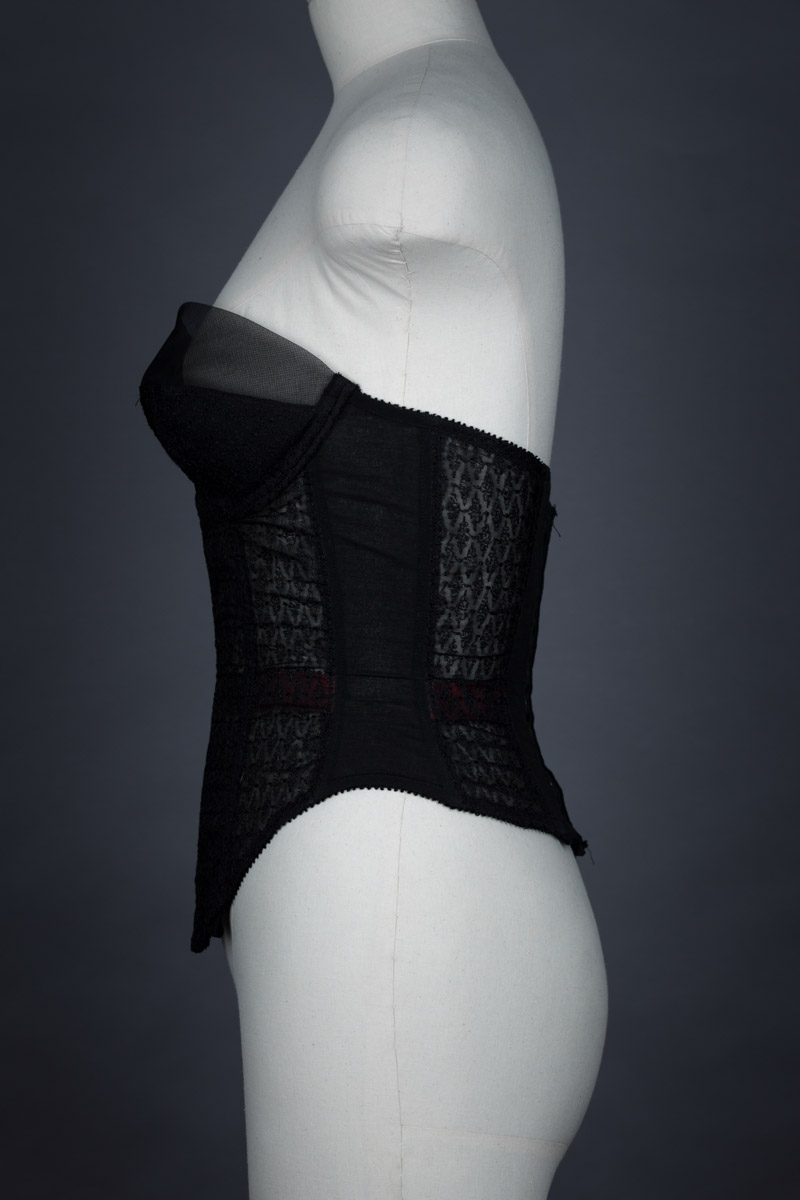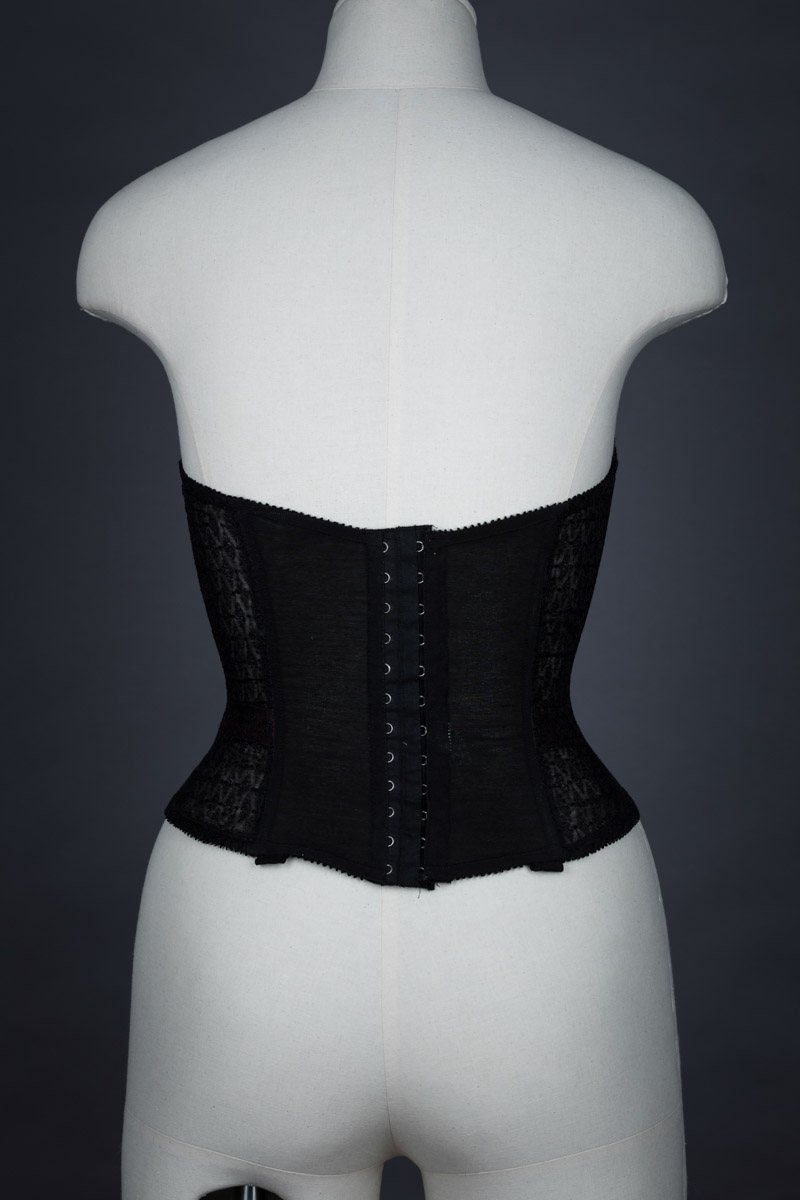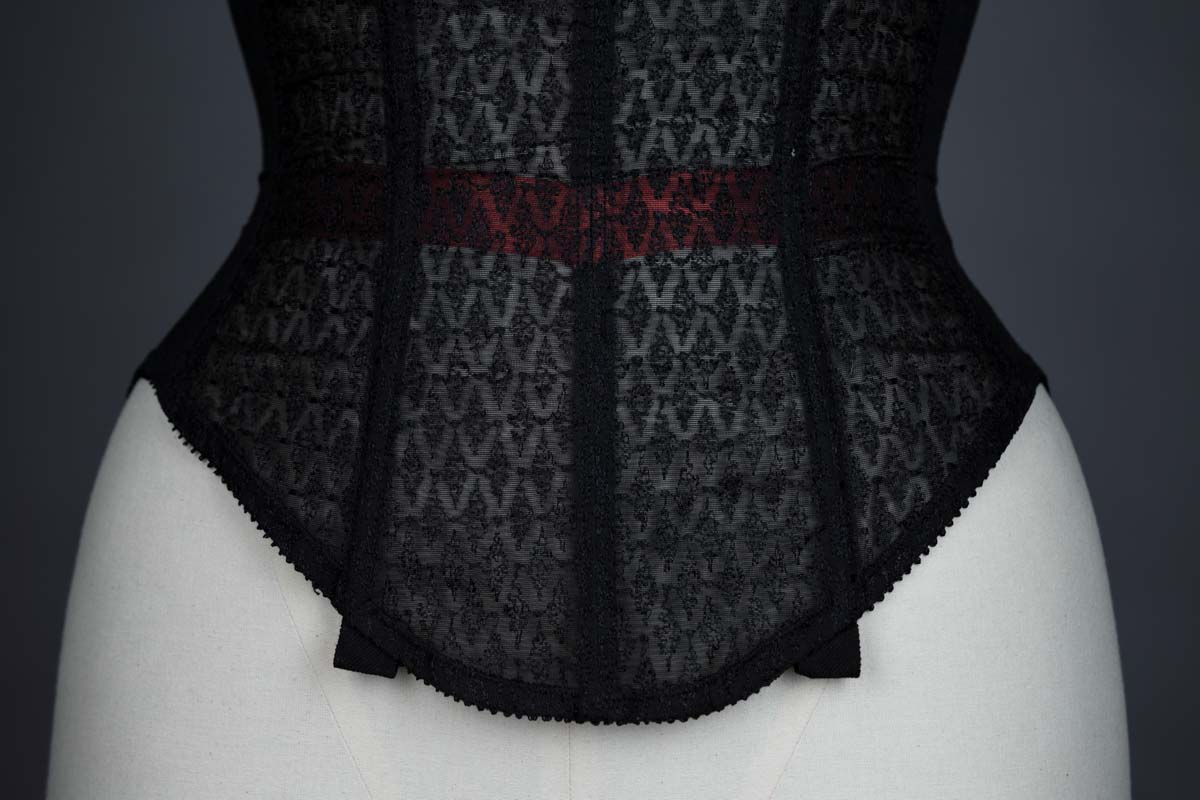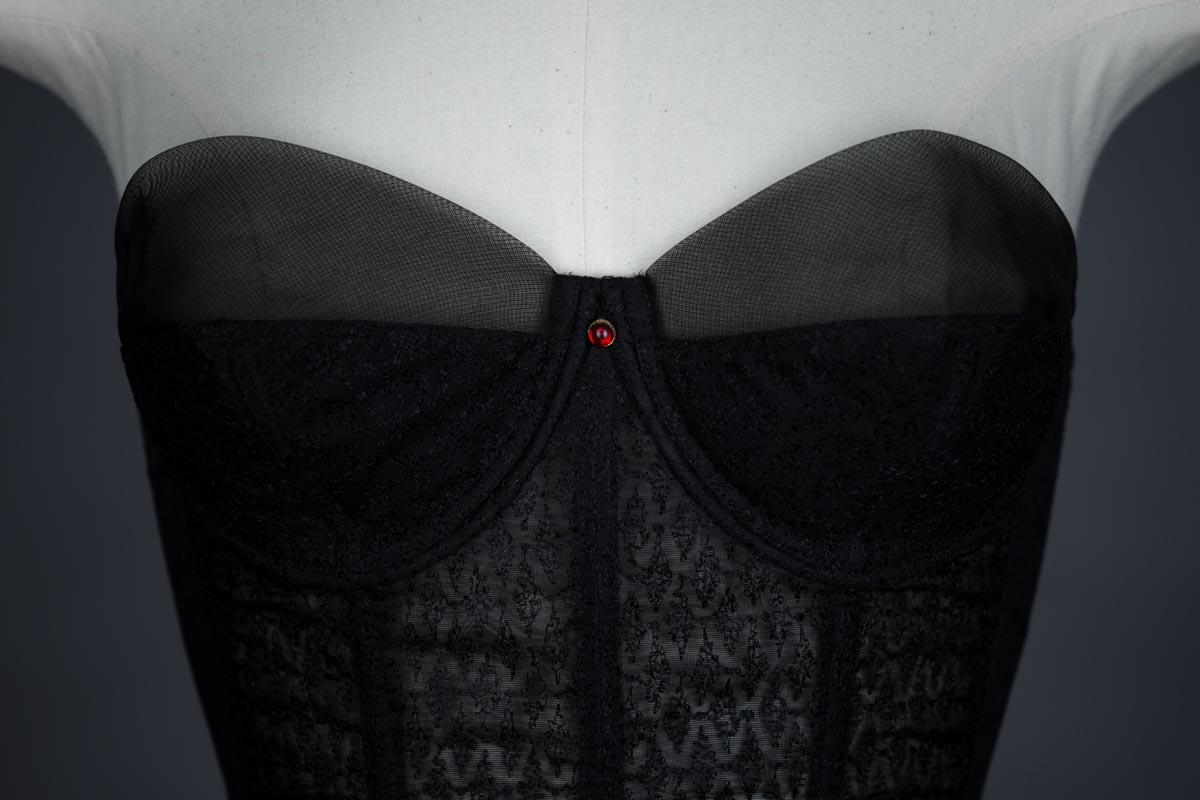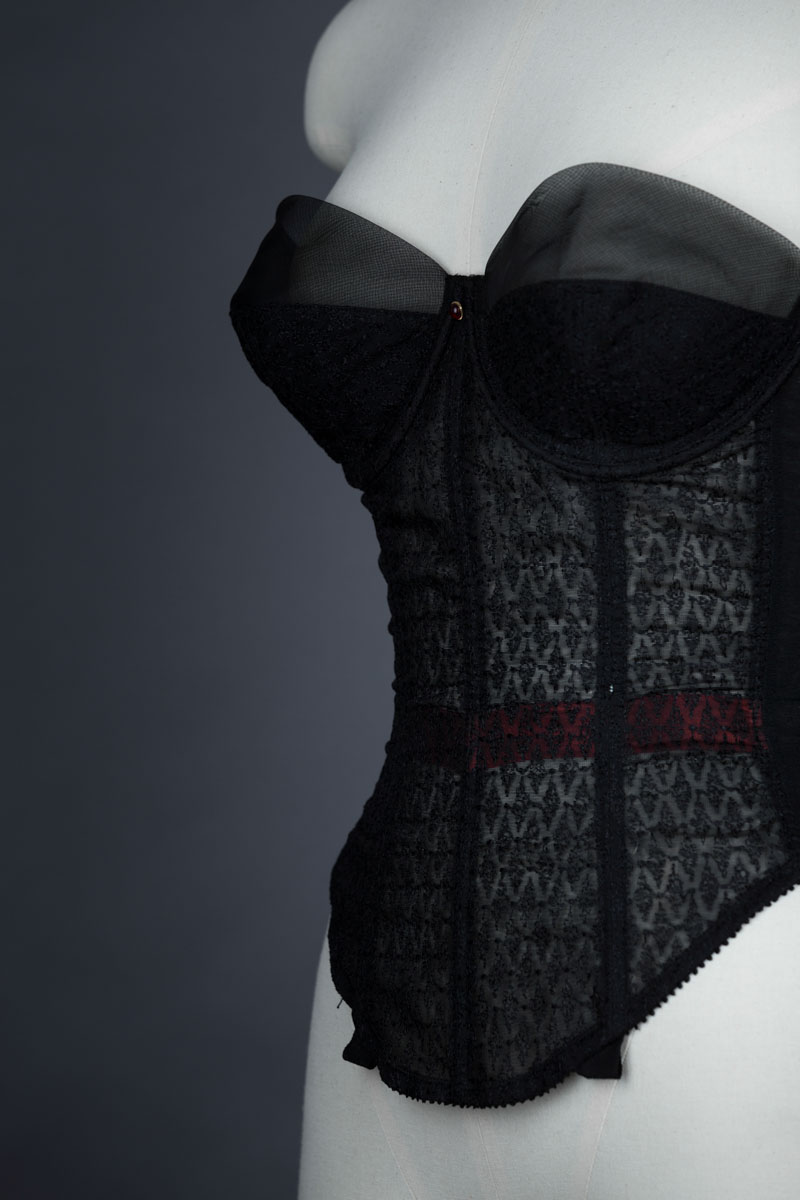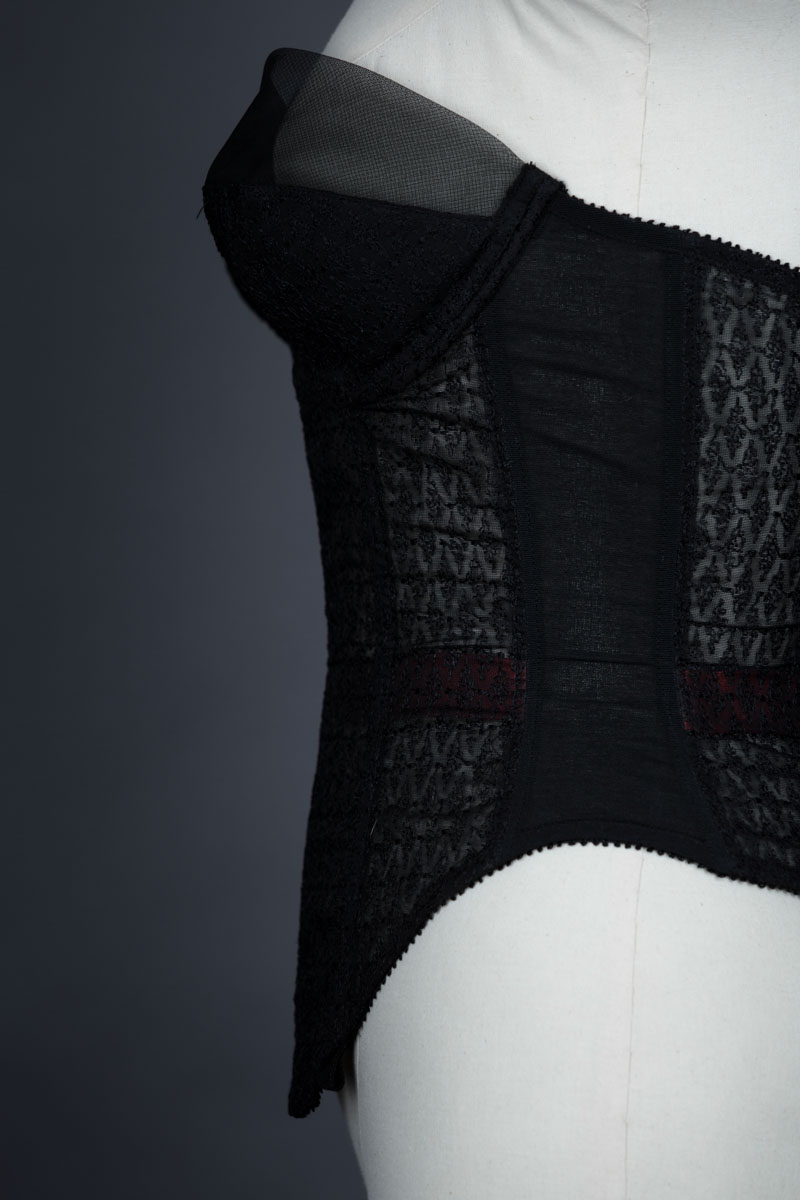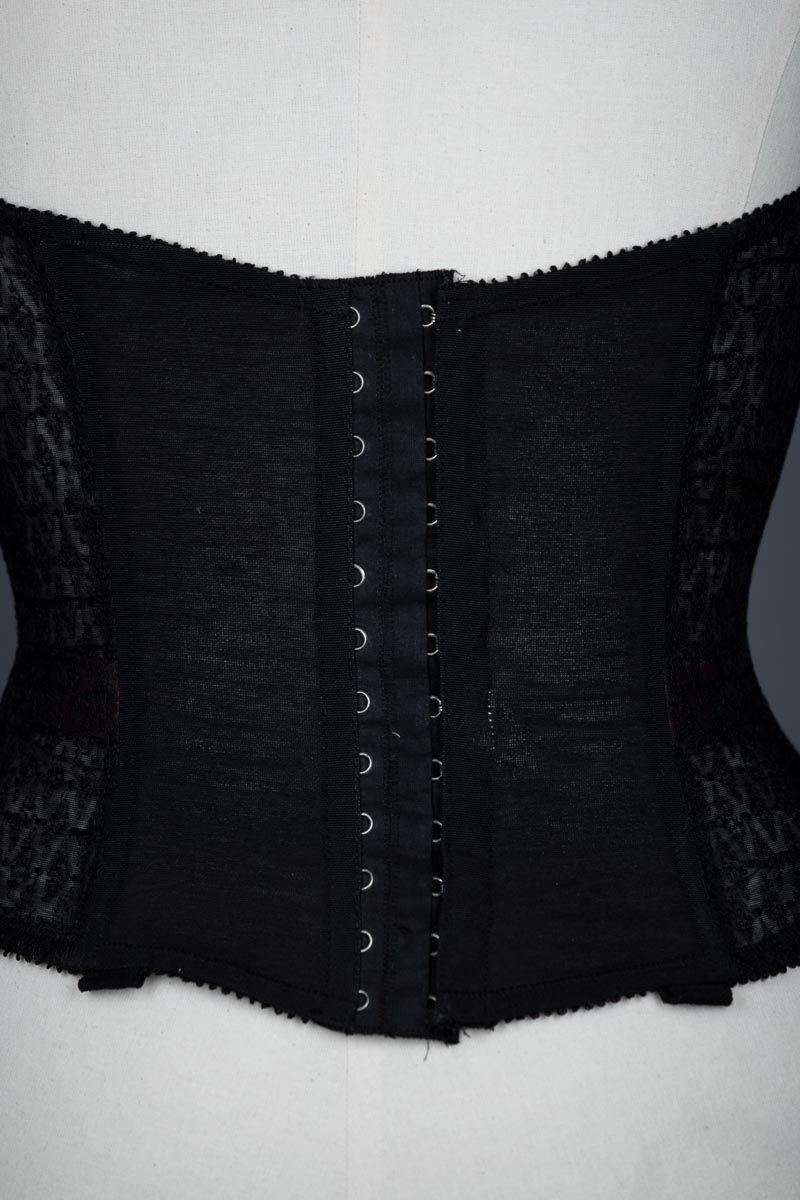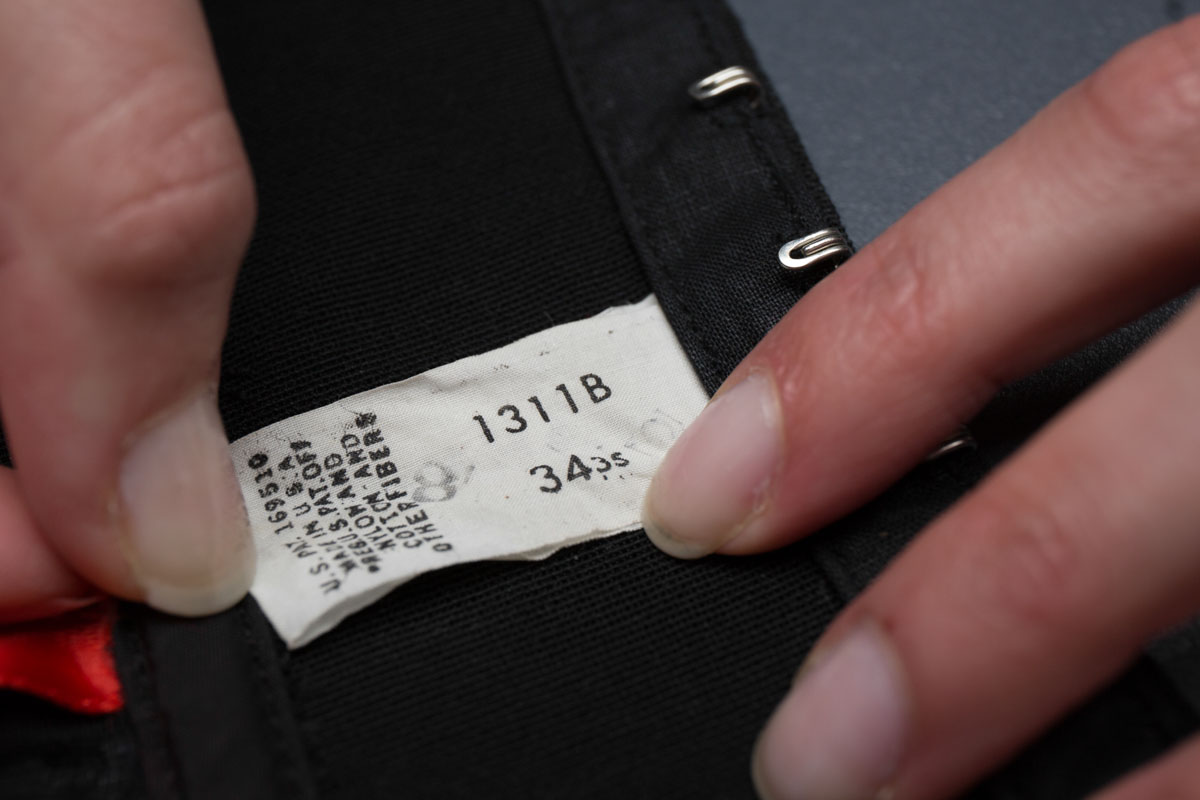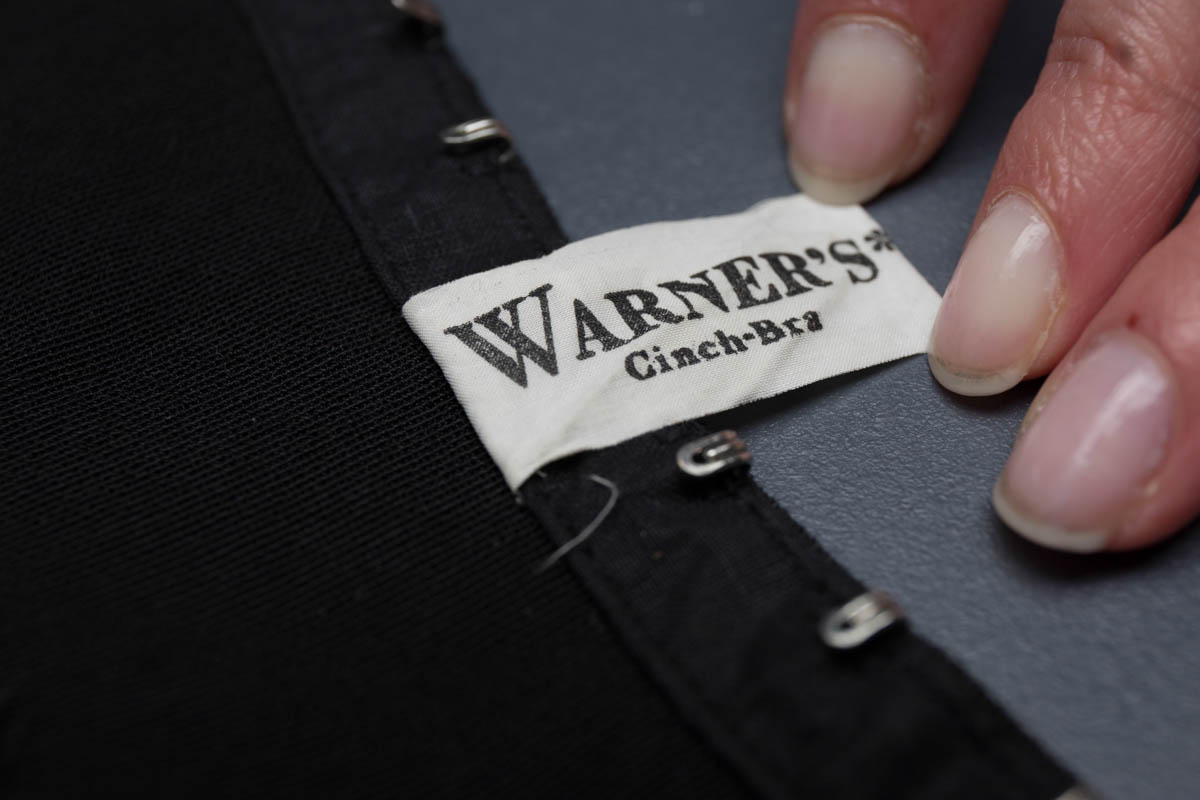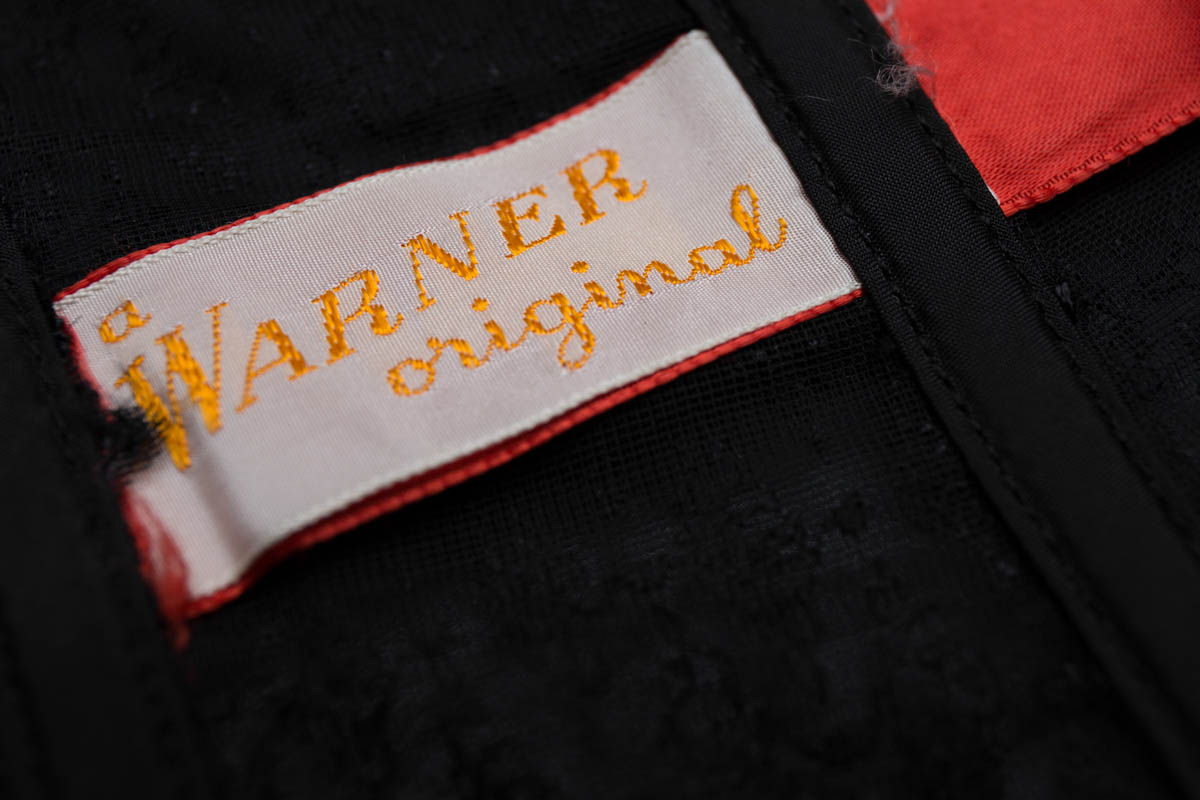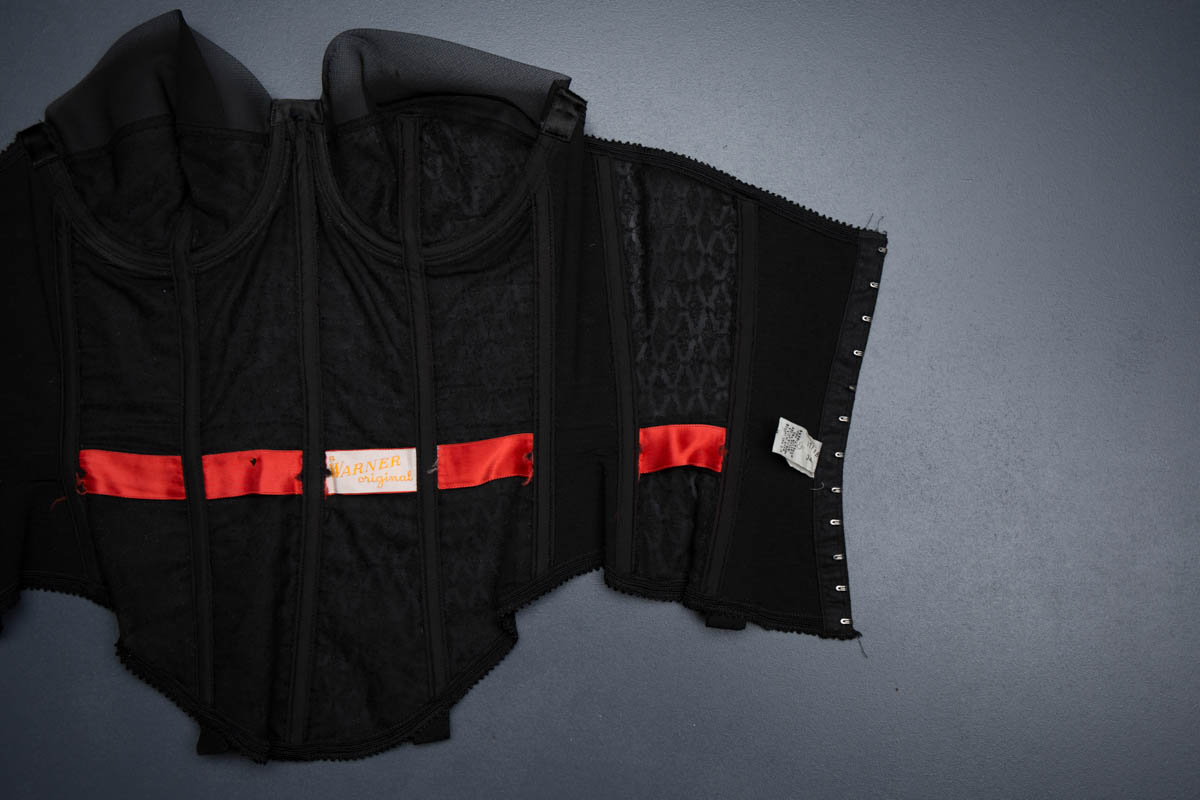Date: c.1953
Origin: United States
Fabric: Nylon and lace
Brand: Warner
In the late nineteenth century, New York physician Dr Lucien Warner gave up his practice to begin a new career lecturing on women’s health issues, including the effects of the corset. In 1873, he designed a corset that provided the desired fashionable shape along with increased flexibility. The following year, Lucien Warner and his brother founded Warner Brothers Corset Manufacturers. After buying Mary Phelps Jacob’s brassiere patent in 1915, Warner’s went on to introduce lettered cup sizing in the 1930s and released its first line of extremely successful ‘Merry Widow’ foundation garments in 1952.
Named after, but not featured in, Lana Turner’s movie ‘The Merry Widow’, Warner’s expanded their collection and updated the styles throughout the 1950s. All Warner’s ‘Merry Widow’ corselets and cinch-bras were promoted for their ability to create a fashionable hourglass silhouette. Travel was popular in the 1950s and synthetics were not only easy to look after but also lightweight and so wouldn’t take up much of the newly introduced baggage allowance on flights. The Warner’s ‘Merry Widow’ is a good example of an almost Victorian style of corsetry made using the lightweight materials of the 1950s. Usually constructed from embroidered nylon marquisette or lace and lined with plain nylon marquisette, with nine spiral steel bones for structure and shaping, these garments weigh a fraction of a similar garment made from cotton coutil.
This garment is made a mix of plain nylon tulle, embroidered tulle and stretch panels. Satin tape is used to encase underwires and vertical boning. The boning throughout the garment is 5mm spiral steel. A wide red satin ribbon is used at the waistline for re-enforcement, providing a contrasting colour through the other sheer black fabric. A picot edge elastic encases the top and bottom edges of the garment, with hook and eye tape fastening at the centre back.
The cups have a 3 pattern piece construction, with a top cup of folded nylon tulle with a clean edge. The boning channel directly beneath the cups extends vertically over the bottom cup seam. The steel boning extends up over the underwire, structuring the cup up to the horizontal bust seam. Satin encased padding covers the ends of the underwire at the centre front and underarm. There are loops at the bottom hem at the centre front and back for detachable suspenders, which were sadly lost from this garment. A red glass diamante encased in a brass fitting embellishes the centre front.
From the collection of Karolina Laskowska
